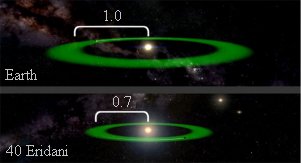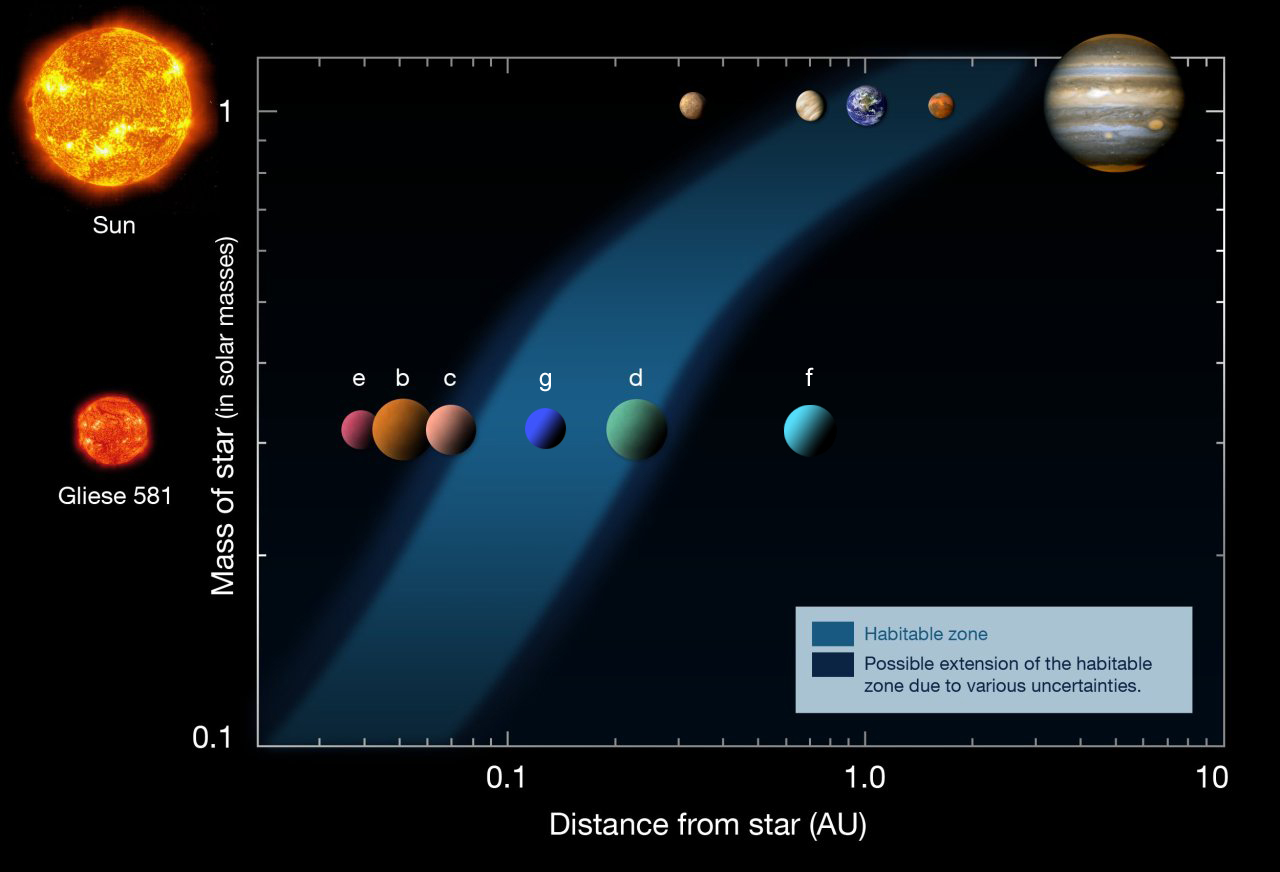Habitable Zone
A habitable zone (HZ) is the area around a star where liquid water could exist on (or near the surface of) a planet. We call it an HZ because we believe liquid water is vital for the existence of life. An HZ is sometimes called a CHZ, where the C stands for 'continuously' or 'circumstellar'. The name Goldilocks Zone is perhaps a more useful way to describe an HZ. It is a region that is not too hot, and not too cold, but just right!

Credit: NASA/JPL
The size and location of an HZ depend on the size and type of its star. In our Solar System, this zone stretches from just outside Venus' orbit to just inside that of Mars. You have probably noticed that this zone includes the Earth!
Typically, hot, bright stars have wide HZs. Let's use the star Sirius as an example. Sirius is 26 times brighter than the Sun. If our Earth was in orbit around Sirius, it would have to be much further away from the star to enjoy the same temperatures. In fact, it would have to be at about the same distance as Jupiter is from the Sun. In contrast, if the Earth were in orbit around a much dimmer star, like 40 Eridani it would need to be much closer. The Earth would need to be in a Venus-like orbit to receive its present level of warmth.
Of course, few scientific definitions are ever that simple. Just because a planet is in an HZ does not mean that liquid water does or even can exist there. For example, a planet's cloud cover or atmosphere will affect its surface temperature. And we cannot assume that every world outside an HZ cannot sustain life. Moons that are outside an HZ may have other sources of heat which allow liquid water to exist. For example, Jupiter's tidal forces produce heat on some of its moons.

Credit: Wikipedia
The big question for planetary scientists and astrobiologists is 'how special is the Earth?'. Are there other places out there where life can survive? And how do we go about finding it? For now, looking for exoplanets that fall within an HZ seems a sensible approach. There are 200 million stars in our galaxy. Imagine one in a thousand had a small rocky planet. They have a stable orbit within the star's HZ. That would mean 200,000 planets where life might exist.

